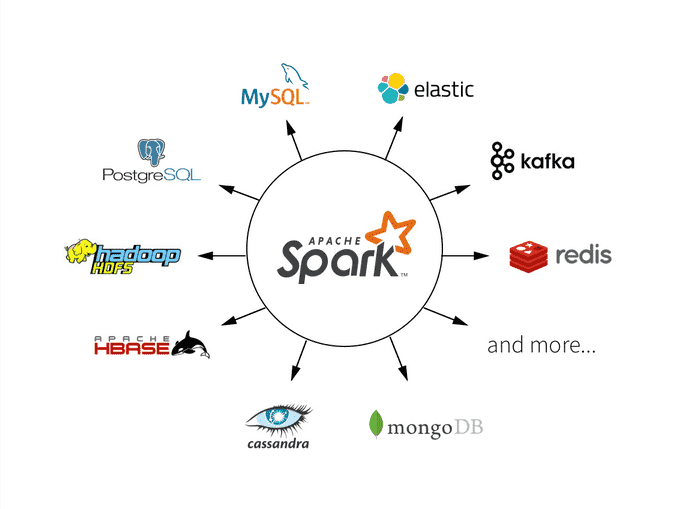Apache Spark is a data processing framework that can quickly perform processing tasks on very large data sets, and can also distribute data processing tasks across multiple computers, either on its own or in tandem with other distributed computing tools.
At a fundamental level, an Apache Spark application consists of two main components: a driver, which converts the user’s code into multiple tasks that can be distributed across worker nodes, and executors, which run on those nodes and execute the tasks assigned to them. Some form of cluster manager is necessary to mediate between the two.

Out of the box, Spark can run in a standalone cluster mode that simply requires the Apache Spark framework and a JVM on each machine in your cluster. In the enterprise, this will normally mean running on Hadoop YARN (this is how the Cloudera and Hortonworks distributions run Spark jobs), but Apache Spark can also run on Apache Mesos, Kubernetes, and Docker Swarm.
Apache Spark can be found as part of Amazon EMR, Google Cloud Dataproc, and Microsoft Azure HDInsight. Databricks, the company that employs the founders of Apache Spark, also offers the Databricks Unified Analytics Platform, which is a comprehensive managed service that offers Apache Spark clusters, streaming support, integrated web-based notebook development, and optimized cloud I/O performance over a standard Apache Spark distribution.Apache Spark builds the user’s data processing commands into a Directed Acyclic Graph, or DAG. The DAG is Apache Spark’s scheduling layer; it determines what tasks are executed on what nodes and in what sequence. Programming languages supported by Spark include: Java, Python, Scala, and R. Application developers and data scientists incorporate Spark into their applications to rapidly query, analyze, and transform data at scale. Tasks most frequently associated with Spark include ETL and SQL batch jobs across large data sets, processing of streaming data from sensors, IoT, or financial systems, and machine learning task
